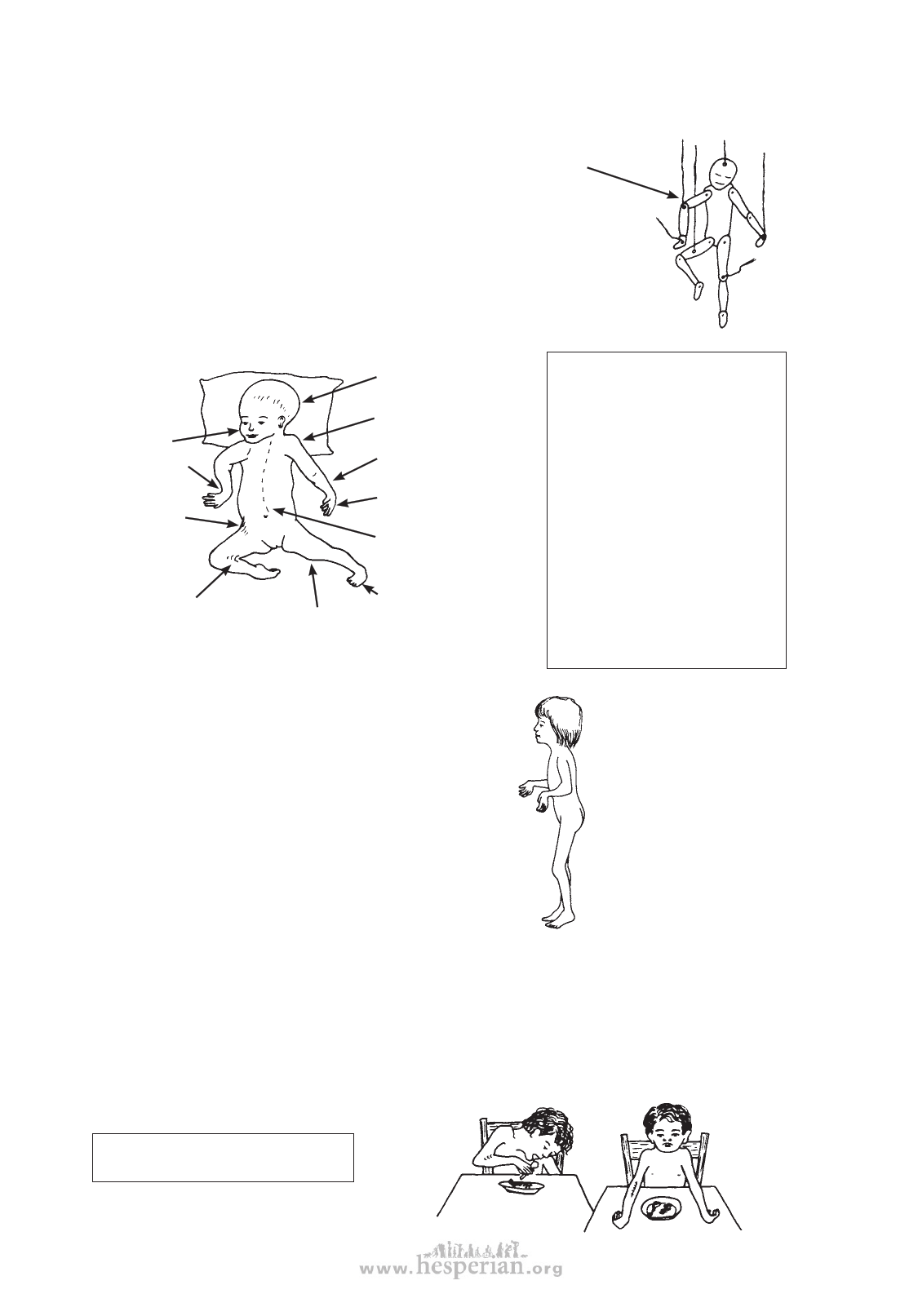
122 chapter 12
ARTHROGRYPOSIS (Multiple contractures from birth)
Arthrogryposis means ‘curved joints’. Children with this disability
are born with stiff joints and weak muscles. The strange position of
arms and/or legs may give a child the look of a wooden puppet.
In some children, both arms and legs may be severely affected. In
others, only the legs or feet, or hands or arms may be affected.
A child born with clubbed feet and with one or both arms stiff
with hands turned out, may have arthrogryposis.
TYPICAL BABY WITH
ARTHROGRYPOSIS
Sometimes the
face is long and
the jaw large.
wrist often bent
up or out stiffly
hips often bent
upward or outward
stiffly; may be
dislocated
contractures with
‘webbing’ of skin behind
joints (at knees, hips,
elbows, or shoulders)
mind completely normal
knees bent or
straight, in a
stiff position
shoulders sometimes
turned in
often arms are stiff
at elbows and weak
hands and fingers
often very weak
spine often curved
but trunk strength
usually normal
club foot common
The cause of
arthrogryposis is not
known. It may be a
virus infection of the
mother, during pregnancy.
Arthrogryposis is a rare
condition in most of the
world, but for unknown
reasons, in parts of Central
and South America it
occurs more frequently.
(In PROJIMO, in Mexico,
1 of every 100 disabled
children seen has
arthrogryposis.)
Rehabilitation of the child with arthrogryposis
aims at helping the child do as much for herself as
possible.
Some children with arthrogryposis are able to
walk, especially if contractures are corrected.
Correction of club feet (see p. 115) and hip and
knee contractures should begin gradually, and
without forcing, soon after birth, with casting
(see p. 565), positioning, and/or range-of-motion
exercises (see p. 115).
TYPICAL STANDING
POSITION OF A CHILD
WITH ARTHROGRYPOSIS
If both hips are
dislocated, surgery to
put the bones back
into their sockets is
not usually helpful.
The child walks as
well without surgery.
If only one hip is
dislocated, surgery
may help.
Often, however, contractures of arthrogryposis can only be corrected by surgery.
The possible benefits—and losses—which surgery may bring should be carefully
evaluated. For example, a stiff elbow in a bent (contracted) position may be much
better for eating than an elbow that has been straightened, and will not bend.
MORE USEFUL
LESS USEFUL
WARNING: A STIFF ELBOW IS
OFTEN MORE USEFUL LEFT BENT
Disabled village Children